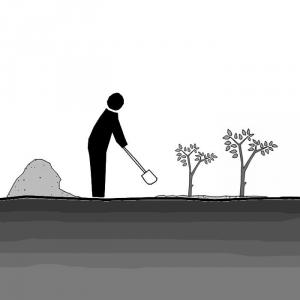Executive Summary
Compost is the soil-like substance resulting from the controlled aerobic degradation of organics . Composting products (compost, vermicompost, pit humus or terra preta) derive from raw organic matter coming from biodegradable solid waste or animal or humane excreta . Pit humus is the term used to describe the material removed from a double pit technology (double ventilated improved pit, fossa alterna or twin pits for pour flush toilets , composting toilets, arborloos or terra preta toilets ) because it is produced passively underground and has a slightly different composition than compost. Both products can be used as soil conditioners. They have a high content in nutrients and organic matter. They also provide food for beneficial microbial activity, moderate soil temperature and improve the water and nutrient holding capacity of the soil. Composting products can be applied in small scale or larger scale agriculture as a soil conditioner prior to planting giving substantial yield increase particularly if compared with poor soils.
| In | Out |
|---|---|
Compost/Biosolids |
Food Products |
Introduction
Compost, vermicompost, pit humus, terra preta, humanure or ecohumus are all products of the degradation of organic wastes. Even though they vary somehow regarding composition and structure, they have similar functions when applied to the soil.
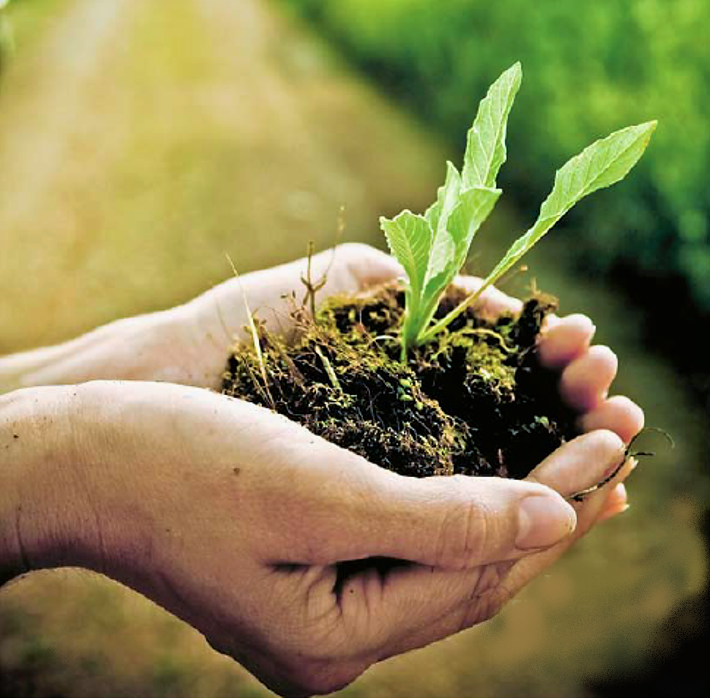
The process of thermophilic (high-temperature) composting generates heat (50 to 80° C), which kills the majority of pathogens present. The composting process requires adequate carbon, nitrogen, moisture, and air. The Double VIP, Fossa Alterna or Twin Pits for Pour Flush are ambient-temperature variations of high-temperature composting. In these technologies, there is almost no increase in temperature because the conditions in the pit (oxygen, moisture, C:N-ratio) are not optimized for composting processes to take place. Because of this, the material is not actually ‘compost’ and is, therefore, referred to as ‘pit humus’.
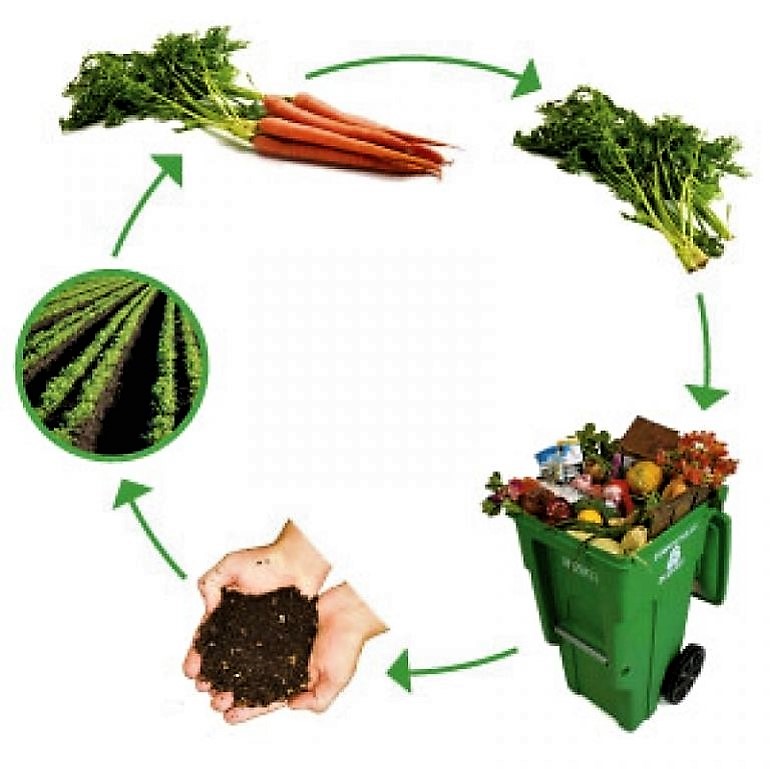
The texture and quality of the pit humus or composting products depends on the materials, which have been used for composting or have been added to the excreta (e.g., soil added to a Fossa Alterna) and the storage conditions. A variety of materials can be composted such as kitchen waste, garden waste, animal manure (cow dung, chicken dung, etc.). But also human urine and faeces are very valuable soil conditioners when properly produced and applied (see also small and large-scale composting, double ventilated improved pit, fossa alterna, twin pits for pour flush toilets, composting toilets, the arborloo, terra preta toilets or terra preta sanitation).
WHO guidelines on excreta use in agriculture (Volume IV) stipulate that compost should achieve and maintain a temperature of 50° C for at least one week before it is considered safe to use. Achieving this value, however, requires a significantly longer period of composting. For technologies that generate pit humus, a minimum of 1 year of storage is recommended to eliminate bacterial pathogens and reduce viruses and parasitic protozoa. WHO guidelines should be consulted for detailed information.

Use of compost
The basic use of compost-like products is conditioning and fertilising soil by the addition of humus, nutrients and beneficial soil bacteria. This helps improving the physical and chemical properties and contributes to enhance the capacity of the soil to store air and water.
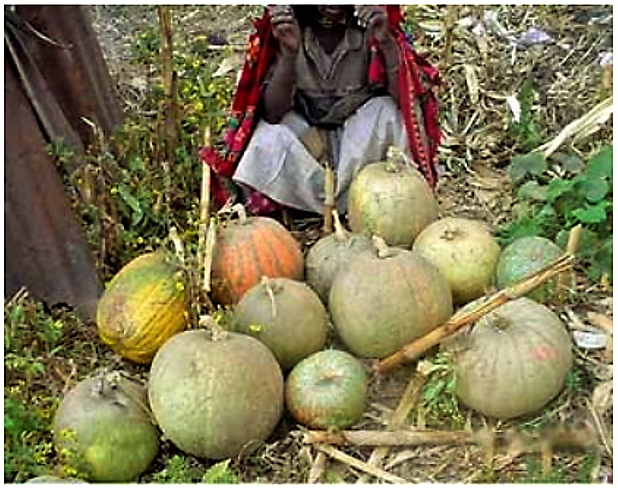
Around the house, compost can be used on the lawns, for potted plants, trees and shrub plants, in the vegetable garden, as mulch, starter mixes. It is always important o incorperate the compost into the soil and to water well in order to protect it from the sun and to disperse the nutrients in the surrounding soil. The application technique varies according to what and where it is to be used. For instance, when compost is applied in the garden, simply add compost to your garden each year in spring or early summer before planting: Till the soil to a depth of 15 to 25 cm. Then, apply 10 cm of compost on top of the soil and till again to mix. If the soil is very poor, you can add some more compost (don’t worry about adding too much compost). Compost releases nutrients slowly and continuously and will not damage plants. Throughout the growing season you can add a sprinkle of compost mixed with soil as a top dressing (COMPOST CENTRE n.y.).
When using compost for the potted plants, potting soil can be made with 1/4 to 1/3 finished compost and the rest sterile soil or sand. You can also sprinkle a thin layer of compost over the house plant soil to add nutrients. This is also excellent to correct drainage problems in soils that have cracked or pulled away from the container. But do not put plants in pure compost. Plants need coarser particles such as sand and soil in order to root properly (COMPOST CENTRE n.y.).
Use of vermicompost
Vermicompost is similar to compost, but as earth worms are used during the composting process, the resulting soil is particularly rich in nutrients, humic acids improving the structure of the soil. Earthworm castings in the home garden often contain 5 to 11 times more nitrogen, phosphorous, and potassium as the surrounding soil. Secretions in the intestinal tracts of earthworms, along with soil passing through the earthworms, make nutrients more concentrated and available for plant uptake, including micronutrients (AALOK et al. 2008, DICKERSON 2004). Moreover, the tunnels formed by the worms aid in the passage of water, which also washes the nutrients from the drilosphere to the roots that extend quite rapidly along these channels (AALOK et al. 2008, DICKERSON 2004).
Vermicompost can be used in many ways, such as a good germinator, potting mix, soil conditioner, tree planting media, seed inoculation and fertiliser replacement. It can be applied as pure cast or it can also be mixed with the garden soil. In pure form, castings provide a superior rate of germination. Vermicompost is a good potting media, suggested good mixture formula can be 5 to 10% vermicompost, mixed with any other potting medium that does not have a nitrogen demand. It will provide sufficient nutrition to sustain growth for up to six months. Vermicompost is also a good soil conditioner. Even in quite barren soils good sprinkling of vermicompost (around 2 to 3 mm thick), dug in and watered well, can improve harvests already in the first season. Another option to use vermicompost is for tree planting. A hand-spade of castings in the bottom of the hole dug for the tree will help ensure healthy growth right from the start (DWF 2009).
For seed inoculation take the seed and shake it together with vermicompost before you spread it. Vermicompost is also a good fertiliser due to its high C/N ratio: sprinkle it around the base of plants and dig it into the soil (DWF 2009).
Pit humus
Pit humus is a term used for composted human faeces, in particular the one from double ventilated improved pit, fossa alterna, twin pits for pour flush toilets, composting toilets, the arborloo, terra preta toilets or terra preta sanitation. It is produced passively underground at ambient temperatures and has a slightly different composition than other composting products (MORGAN 2007; TILLEY et al. 2013). To use pit humus as a soil conditioner it can be mixed into the soil before crops are planted, used to start seedlings or indoor plants or simply mixed into an existing compost pile for further treatment.
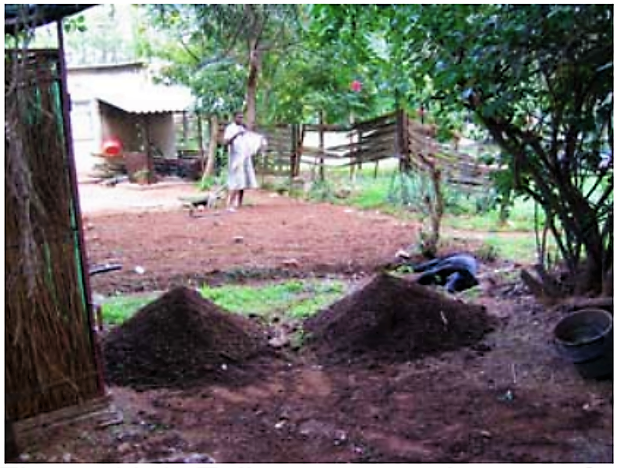
Terra preta
Terra preta (literally “black earth”) is a manmade soil recently discovered in the Amazon region that was produced by pre-Columbian cultures through the conversion of biowaste and faecal matter via lacto-fermentation and vermicomposting into long-term fertile soils. Terra preta soils have a specially high organic carbon content that allows for a long lasting fixation of essential nutrients, water retention and reduced leaching of nutrients from the rhizosphere. The nutrient rich humus in combination with the black carbon acts like a “microbial reef” that promotes and sustains the growth of mycorrhizae and other beneficial microbes, and it has been shown to retain its fertility for thousands of years (adapted from FACTURA et al. 2010). Terra preta products can be used or applied similar with the ordinary compost and vermicompost.
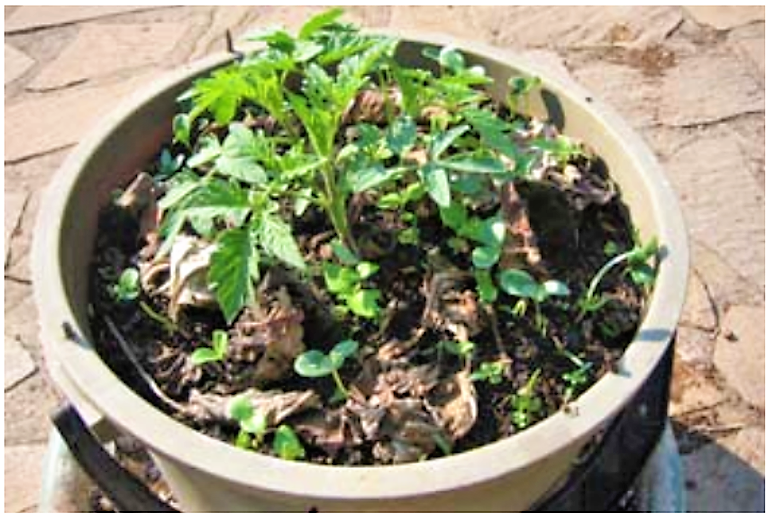
Design Considerations
It has been shown that the productivity of poor soil can be improved by applying equal parts compost and top soil to it. The output from one Fossa Alterna should be sufficient for two 1.5 m by 3.5 m beds (MORGAN 2007) . In order to decide, which type of compost product is better for which type of soil, one must first know what set of organisms is needed in the soil (lacking in the soil); second, what set of carbon compounds are needed around the roots of the plants to grow the beneficial bacteria and fungi; and third, what organisms and kinds of carbons are in the different types of compost products.
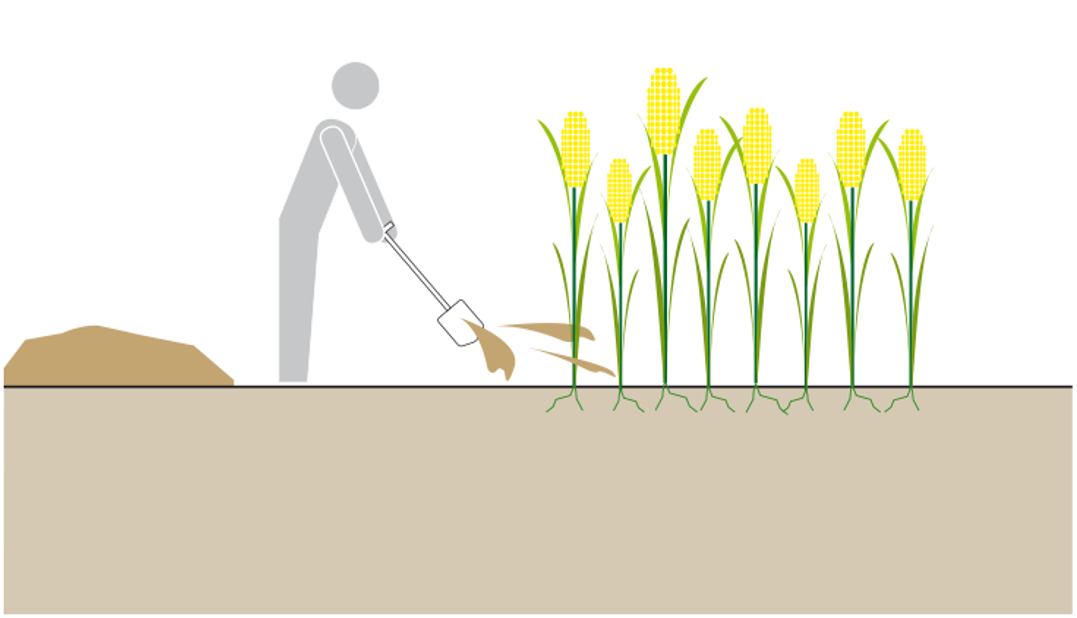
In order to determine the quality of the compost, the most important things are: pH level, soluble salts, moisture, organic matter content, total nitrogen, carbon to nitrogen ratio (C:N), and other physical properties of the compost (e.g. structure).
Health apsects/acceptance
A small risk of pathogen transmission exists, but, if in doubt, any material removed from the pit or vault can be further composted in a regular compost heap before being used or mixed with additional soil and put into a ‘tree pit’, i.e., a nutrient-filled pit used for planting a tree (see also small and large-scale composting). Compost and pit humus should not be applied to crops less than one month before they are harvested. This waiting period is especially important for crops that are consumed raw.
As opposed to sludge, which can originate from a variety of domestic, chemical and industrial sources, compost and pit humus have very few chemical inputs (see also pathogens and contaminants and health risk management). The only chemical sources that could contaminate compost or pit humus might originate from contaminated organic material (e.g., pesticides) or from chemicals that are excreted by humans (e.g., pharmaceutical residues). Compared to the chemicals that may find their way into wastewater sludge, compost and pit humus can be considered as less contaminated.
Compost and pit humus are inoffensive, earth-like products. Regardless, people might refrain from handling and using them. Conducting demonstration activities that promote hands-on experience can effectively show their non-offensive nature and their beneficial use (see also awareness raising).
Operation & maintenance
The material must be allowed to adequately mature before being removed from the system. Then, it can be used without further treatment. Workers should wear appropriate protective clothing.
Compost and pit humus can be beneficially used to improve the quality of soil. They add nutrients and organics and improve the soil’s ability to store air and water. Especially vermicompost improves the soil structure because of the wholes that earthworms have dug. They can be mixed into the soil before crops are planted, used to start seedlings or indoor plants, or simply mixed into an existing compost pile for further treatment. Vegetable gardens filled with pit humus from the Fossa Alterna have shown dramatic improvements over gardens planted without soil conditioner. The use of pit humus has even made agriculture possible in areas which otherwise would not have supported crops.
Vermicomposting: A Better Option for Organic Solid Waste Management
Compost Uses Every Homeowner Should Know
The Composting Toilet System Book
The Composting Toilet System Book is an impressive, comprehensive, reader friendly, and practical guide to choosing, planning and maintaining composting toilet systems for those seeking an alternative to traditional sewer and septic tank systems. It explains the technologies, sources, applications, greywater issues, and regulations relevant to a composting toilet system for the home, whether manufactured or site-built.
DEL PORTO, D. STEINFELD, C. (1999): The Composting Toilet System Book. A Practicle Guide to Choosing, Planning and Maintaining Composting Toilet Systems, an Alternative to Sewer and Septic Systems. Concord: Center for Ecological Pollution Prevention (CEPP)Vermicomposting. Guide H-164
Factsheet on the operation and maintenance of vermi-composts.
DICKERSON, G. (2004): Vermicomposting. Guide H-164. New Mexico: New Mexico State University (NMSU), Cooperative Extension Service, College of Agriculture and, Home Economics URL [Accessed: 01.06.2019]An Ecological Approach to Sanitation in Africa: A Compilation of Experiences
This factsheet provides information and experiences of simple pit toilet and twin pit toilet. It also contains knowledge about upgrading technologies, hygiene and usage of faeces as fertilizer.
EcoSanRes (2008): An Ecological Approach to Sanitation in Africa: A Compilation of Experiences. (= EcoSanRes Factsheet 12 ). Stockholm: Stockholm Environment Institute (SEI)Terra Preta Sanitation: re-discovered from an ancient Amazonian civilisation - integrating sanitation, bio-waste management and agriculture
The objective of this study was to investigate the suitability of terra preta sanitation (TPS) systems as an alternative sanitation option. The effects of lactic-aid conditions in urine-separation dry toilets and a subsequent treatment by vermicomposting are assessed. Research focused on analysing standard chemical and biochemical properties of the toilet products to evaluate their stability and maturity, and establish nutrient status.
FACTURA, H. ; BETTENDORF, T. ; BUZIE, C. ; PIEPLOW, H. ; RECKIN, J. ; OTTERPOHL, R. (2010): Terra Preta Sanitation: re-discovered from an ancient Amazonian civilisation - integrating sanitation, bio-waste management and agriculture. In: Water Science and Technology, accepted for publication: URL [Accessed: 10.05.2019]11 Green New Years Resolutions For 2011
The Humanure Handbook
A comprehensive book on recycling human excrement without chemicals, high technology or pollution. Well written, practical, and thoroughly researched, this self-published book is built on nearly twenty years of experience by the author, who tells us about every aspect of dealing with excrement on the home-scale level. Only available for free as web book.
JENKINS, J. (2005): The Humanure Handbook. A Guide to Composting Human Manure. (= 3rd Edition ). Grove City: Joseph Jenkins Inc. URL [Accessed: 16.08.2010]Toilets That Make Compost
This book describes in an easy-to-understand and picture-based way how to construct three different low cost sanitation solutions, namely arborloos, fossa alterna and urine diversion toilets.
MORGAN, P. EcoSanRes (2007): Toilets That Make Compost . Stockholm: Stockholm Environment Institute URL [Accessed: 09.05.2019]Ecological Toilets
This book describes how to construct Arborloo toilets and how it can be upgraded to VIPs at a later stage.
MORGAN, P. EcoSanRes (2009): Ecological Toilets. (pdf presentation). Stockholm: Stockholm Environment Institute URL [Accessed: 09.05.2019]Smart Sanitation Solutions
Smart Sanitation Solutions presents examples of low-cost household and community-based sanitation solutions that have proven effective and affordable. A wide range of innovative technologies for toilets, collection, transportation, treatment and use of sanitation products that have already helped thousands of poor families to improve their lives is illustrated.
NWP (2006): Smart Sanitation Solutions. Examples of innovative, low-cost technologies for toilets, collection, transportation, treatment and use of sanitation products. (= Smart water solutions ). Amsterdam: Netherlands Water Partnership (NWP) URL [Accessed: 09.05.2019]Marketing Compost. A Guide for Compost Producers in Low and Middle-Income Countries
This guide describes a marketing approach to composting, and is intended to help compost producers run more viable initiatives by unlocking the value of their product. The handbook does not cover everything there is to know about marketing, but starts with the basics and introduces the key principles and techniques. These include understanding the ‘marketing environment’, identifying appropriate target customer groups, and developing and promoting products to suit the market.
ROUSE ROTHENBERGER, S. ZURBRUEGG, C. (2008): Marketing Compost. A Guide for Compost Producers in Low and Middle-Income Countries. Duebendorf: Water and Sanitation in Developing Countries (SANDEC), Swiss Federal Institute for Environmental Science (EAWAG) URL [Accessed: 27.05.2019]Faecal Sludge Management
This is the first book to compile the current state of knowledge on faecal sludge management. It addresses the organization of the entire faecal sludge management service chain, from the collection and transport of sludge, to the current state of knowledge of treatment options, and the final end use or disposal of treated sludge. It presents an integrated approach that brings together technology, management, and planning, based on Sandec’s 20 years of experience in the field. It also discusses important factors to consider when evaluating and upscaling new treatment technology options. The book is designed for undergraduate and graduate students, engineers, and practitioners in the field who have some basic knowledge of environmental and/or wastewater engineering.
STRANDE, L. ; RONTELTAP, M. ; BRDJANOVIC, D. (2014): Faecal Sludge Management. Systems Approach for Implementation and Operation. London: IWA Publishing URL [Accessed: 16.07.2014]Compendium of Sanitation Systems and Technologies. 2nd Revised Edition
This compendium gives a systematic overview on different sanitation systems and technologies and describes a wide range of available low-cost sanitation technologies.
TILLEY, E., ULRICH L., LÜTHI, C., REYMOND P. and ZURBRÜGG C. (2014): Compendium of Sanitation Systems and Technologies. 2nd Revised Edition. Duebendorf, Switzerland: Swiss Federal Institute of Aquatic Science and Technology (Eawag) URL [Accessed: 03.05.2023] PDFGuidelines for the safe use of wastewater excreta and greywater. Volume IV. Excreta and Greywater Use in Agriculture
Volume IV of the Guidelines for the Safe Use of Wastewater, Excreta and Greywater recognizes the reuse potential of wastewater and excreta (including urine) in agriculture and describes the present state of knowledge as regards potential health risks associated with the reuse as well as measures to manage these health risks following a multi-barrier approach.
WHO (2006): Guidelines for the safe use of wastewater excreta and greywater. Volume IV. Excreta and Greywater Use in Agriculture. Geneva: World Health Organisation (WHO) URL [Accessed: 09.05.2019] PDFCompendium of Sanitation Systems and Technologies (Arabic)
This is the Arabic version of the Compendium of Sanitation Systems and Technologies. The Compendium gives a systematic overview on different sanitation systems and technologies and describes a wide range of available low-cost sanitation technologies.
TILLEY, E. ULRICH, L. LUETHI, C. REYMOND, P. SCHERTENLEIB, R. ZURBRUEGG, C. (2014): Compendium of Sanitation Systems and Technologies (Arabic). 2nd Revised Edition. Duebendorf, Switzerland: Swiss Federal Institute of Aquatic Science and Technology (Eawag) PDFNährstoffe und Verwendung von Düngern in der Landwirtschaft
These terms of references define the legal regulations in Switzerland concerning the water protection and air pollution control for the use of nutrients and fertilisers in agriculture.
BAFU ; BLW (2012): Nährstoffe und Verwendung von Düngern in der Landwirtschaft. Ein Modul der Vollzugshilfe Umweltschutz in der Landwirtschaft. Bern: Bundesamt für Umwelt (BAFU) / Bundesamt für Landwirtschaft (BLW) URL [Accessed: 27.05.2019]Terra Preta. Magic Soil of the Lost Amazon
This article provides detailed information on terra preta, the historical background and the latest ideas and theories of creating a synthetic terra preta.
BALLIETT, A. (2007): Terra Preta. Magic Soil of the Lost Amazon. In: Acres U.S.A. The Voice of Eco-Agriculture: Volume 37 , 16-18. URL [Accessed: 11.05.2019]Technology Review of Composting Toilets
This GIZ publication explains the design, use and operational requirements of composting toilets. Ample examples for composting toilets from around the world are included in the publication to show that these types of toilets have a wide range of applications under a variety of circumstances (for wealthy or poor people; for cold, hot, wet or dry climates; for urban or rural settings). The appendix contains a listing of suppliers.
BERGER, W. (2011): Technology Review of Composting Toilets. Eschborn: Deutsche Gesellschaft für Internationale Zusammenarbeit (GIZ) URL [Accessed: 12.05.2019]Decentralised Composting for Cities of Low- and Middle-Income Countries – A User’s Manual
This book describes approaches and methods of composting on neighbourhood level in small-and middle-scale plants. It considers issues of waste collection, composting technologies, management systems, occupational health concerns, product quality, marketing and end-user demands.
DRESCHER, S. ZURBRUEGG, C. ENAYETULLAH, I. SINGHA, M.A.D. (2006): Decentralised Composting for Cities of Low- and Middle-Income Countries – A User’s Manual. Dhaka: Swiss Federal Institute of Aquatic Science (EAWAG), Department of Water and Sanitation in Developing Countries (SANDEC) and Waste Concern URL [Accessed: 16.08.2010]An Ecological Approach to Sanitation in Africa: A Compilation of Experiences
This factsheet provides information and experiences of simple pit toilet and twin pit toilet. It also contains knowledge about upgrading technologies, hygiene and usage of faeces as fertilizer.
EcoSanRes (2008): An Ecological Approach to Sanitation in Africa: A Compilation of Experiences. (= EcoSanRes Factsheet 12 ). Stockholm: Stockholm Environment Institute (SEI)Toilets That Make Compost. Factsheet
This information sheet summarises the Peter Morgan publication under the same name on two pages. It describes three types of simple and affordable composting toilets: Two types of shallow pit toilets (arborloo) and the urine diverting toilet.
EcoSanRes (2008): Toilets That Make Compost. Factsheet. (pdf presentation). (= EcoSanRes Factsheet 13 ). Stockholm: Stockholm Environment InstituteTerra Preta Sanitation: re-discovered from an ancient Amazonian civilisation - integrating sanitation, bio-waste management and agriculture
The objective of this study was to investigate the suitability of terra preta sanitation (TPS) systems as an alternative sanitation option. The effects of lactic-aid conditions in urine-separation dry toilets and a subsequent treatment by vermicomposting are assessed. Research focused on analysing standard chemical and biochemical properties of the toilet products to evaluate their stability and maturity, and establish nutrient status.
FACTURA, H. ; BETTENDORF, T. ; BUZIE, C. ; PIEPLOW, H. ; RECKIN, J. ; OTTERPOHL, R. (2010): Terra Preta Sanitation: re-discovered from an ancient Amazonian civilisation - integrating sanitation, bio-waste management and agriculture. In: Water Science and Technology, accepted for publication: URL [Accessed: 10.05.2019]The Humanure Handbook
A comprehensive book on recycling human excrement without chemicals, high technology or pollution. Well written, practical, and thoroughly researched, this self-published book is built on nearly twenty years of experience by the author, who tells us about every aspect of dealing with excrement on the home-scale level. Only available for free as web book.
JENKINS, J. (2005): The Humanure Handbook. A Guide to Composting Human Manure. (= 3rd Edition ). Grove City: Joseph Jenkins Inc. URL [Accessed: 16.08.2010]Guidelines on the Use of Urine and Faeces in Crop Production
These guidelines provide a thorough background on the use of urine (and faeces) for agricultural purposes. Aspects discussed are requirements for plant growth, nutrients in excreta, hygiene aspects, and recommendations for cultivation. It provides detailed guidance on the use of urine for purposes.
JOENSSON, H. RICHERT, A. VINNERAAS, B. SALOMON, E. (2004): Guidelines on the Use of Urine and Faeces in Crop Production. (= EcoSanRes Publications Series , 2004 ). Stockholm: EcoSanRes URL [Accessed: 17.04.2012]Compost Use and Soil Fertility
Plant Trials Using Fossa Alterna Humus
The ultimate proof of the usefulness of eco-humus and urine in agriculture is to demonstrate its effect on plant growth and yield directly. This chapter describes a series of trials in which the growth and yield of vegetables planted in humus derived from the Fossa alterna were studied.
MORGAN, P. (2004): Plant Trials Using Fossa Alterna Humus. Stockholm : Ecological Sanitation Research (EcoSanRes), Stockholm Environment Institute (SEI) URL [Accessed: 20.06.2013]The Value of Leaves as and Additive of Fossa Alterna Pits
This is a short description and findings of a trial adding leaves to fossa alterna pits. Leaves help the composting process considerably, by adding more air into the mix, and by adding a composting process undertaken largely by fungi to the already existing bacteriological process undertaken by soil micro-organisms.
MORGAN, P. (2004): The Value of Leaves as and Additive of Fossa Alterna Pits. Stockholm : Ecological Sanitation Research (EcoSanRes), Stockholm Environment Institute (SEI) URL [Accessed: 21.06.2013]Methods of Using "Toilet Compost" in Agriculture
This document gives a simple overview over toilet compost, its preparation and fields of application.
MORGAN, P. (2010): Methods of Using "Toilet Compost" in Agriculture. Stockholm : Ecological Sanitation Research (EcoSanRes), Stockholm Environment Institute (SEI) URL [Accessed: 01.06.2019]Toilets That Make Compost
This book describes in an easy-to-understand and picture-based way how to construct three different low cost sanitation solutions, namely arborloos, fossa alterna and urine diversion toilets.
MORGAN, P. EcoSanRes (2007): Toilets That Make Compost . Stockholm: Stockholm Environment Institute URL [Accessed: 09.05.2019]Ecological Toilets
This book describes how to construct Arborloo toilets and how it can be upgraded to VIPs at a later stage.
MORGAN, P. EcoSanRes (2009): Ecological Toilets. (pdf presentation). Stockholm: Stockholm Environment Institute URL [Accessed: 09.05.2019]Smart Sanitation Solutions
Smart Sanitation Solutions presents examples of low-cost household and community-based sanitation solutions that have proven effective and affordable. A wide range of innovative technologies for toilets, collection, transportation, treatment and use of sanitation products that have already helped thousands of poor families to improve their lives is illustrated.
NWP (2006): Smart Sanitation Solutions. Examples of innovative, low-cost technologies for toilets, collection, transportation, treatment and use of sanitation products. (= Smart water solutions ). Amsterdam: Netherlands Water Partnership (NWP) URL [Accessed: 09.05.2019]Compost Bins as an Alternative Solution to the Problem of Household Waste Problem in Urban Areas
This paper describes a household composting project implemented by SEVENATHA in Dehiwala Mt. Levenia Municipal Council near Colombo in Sri Lanka with support from UNDP.
PREMAKUJMARA, D.G.H. (2000): Compost Bins as an Alternative Solution to the Problem of Household Waste Problem in Urban Areas. URL [Accessed: 05.08.2010]Marketing Compost. A Guide for Compost Producers in Low and Middle-Income Countries
This guide describes a marketing approach to composting, and is intended to help compost producers run more viable initiatives by unlocking the value of their product. The handbook does not cover everything there is to know about marketing, but starts with the basics and introduces the key principles and techniques. These include understanding the ‘marketing environment’, identifying appropriate target customer groups, and developing and promoting products to suit the market.
ROUSE ROTHENBERGER, S. ZURBRUEGG, C. (2008): Marketing Compost. A Guide for Compost Producers in Low and Middle-Income Countries. Duebendorf: Water and Sanitation in Developing Countries (SANDEC), Swiss Federal Institute for Environmental Science (EAWAG) URL [Accessed: 27.05.2019]Guidelines for the Safe Use of Urine and Faeces in Ecological Sanitation Systems
These guidelines provide a thorough background on the safe use of urine and faeces for agricultural purposes. Aspects like the health risk associated we the use of human excreta in agriculture and how to limit them are discussed.
SCHOENNING, C. STENSTROEM, T. A. (2004): Guidelines for the Safe Use of Urine and Faeces in Ecological Sanitation Systems. (= EcoSanRes Publication Series, Report 2004-1 ). Stockholm: Stockholm Environment InstituteGuidelines for the safe use of wastewater excreta and greywater. Volume IV. Excreta and Greywater Use in Agriculture
Volume IV of the Guidelines for the Safe Use of Wastewater, Excreta and Greywater recognizes the reuse potential of wastewater and excreta (including urine) in agriculture and describes the present state of knowledge as regards potential health risks associated with the reuse as well as measures to manage these health risks following a multi-barrier approach.
WHO (2006): Guidelines for the safe use of wastewater excreta and greywater. Volume IV. Excreta and Greywater Use in Agriculture. Geneva: World Health Organisation (WHO) URL [Accessed: 09.05.2019] PDFOrganic Waste Recycling
This book covers the principles and practices of technologies for the control of pollution originating from organic wastes (e.g. human faeces and urine, wastewater, solid wastes, animal manure and agro-industrial wastes) and the recycling of these organic wastes into valuable products such as fertilizer, biofuels, algal and fish protein and irrigated crops.
POLPRASERT, C. (2007): Organic Waste Recycling. Technology and Management. Bangkok, Thailand: Asian Institute of Technology URL [Accessed: 06.06.2019]Vermicompost Tea Production and Plant Growth Impacts
This is part one of the research study of Ohio State University on the impact of vermicompost on tea production and plant growth where the research study found out that aerating vermicompost tea during brewing results in significant growth responses, even at the concentration tested.
ARANCON, N.Q. EDWARDS, C.A. DICK, R. DICK, L. (2007): Vermicompost Tea Production and Plant Growth Impacts. Ohio State UniversityDelivering Water, Sanitation and Hygiene Services in an Uncertain Environment: Piloting Ecological Sanitation (EcoSan) in the Emergency Context of Port-au-Prince, Haiti, after the 2010 Earthquake
The earthquake that struck Haiti in January 2010 and the cholera epidemic that followed from October 2010, resulted in one of the largest humanitarian relief efforts in history. Many of the internally displaced persons camps were located in urban neighbourhoods with high groundwater, making onsite sanitation extremely difficult. In response to these unique conditions a small local organization, SOIL, partnered with Oxfam Great Britain to pilot urine diversion EcoSan toilets in camps throughout Port-au-Prince. This briefing paper covers this pilot project from March 2010 through March 2012. During that 2-year period, SOIL’s toilets served over 20,000 people and treated more than 400,000 gallons of human waste, converting it to rich compost.
KILBRIDE, A. KRAMER, S. PRENETA, N. (2013): Delivering Water, Sanitation and Hygiene Services in an Uncertain Environment: Piloting Ecological Sanitation (EcoSan) in the Emergency Context of Port-au-Prince, Haiti, after the 2010 Earthquake. (= WECD International Conference , 36 ). Oakland: Sustainable Organic Integrated Livelihoods (SOIL) URL [Accessed: 01.06.2019]Composting at Households in Kitgum Town, Uganda - Draft
A case study on household-level composition in Kitgum, Uganda. The project aims at using composting to develop practical operation and management strategies for peri-urban areas and to demonstrate the safe reuse of faces by co-composting them.
KINOBE, J. OLWENY, S. NIWAGABA, C. (2010): Composting at Households in Kitgum Town, Uganda - Draft. (= Susana Case Study ). Eschborn: Susana URL [Accessed: 16.08.2010]Delivering Water, Sanitation and Hygiene Services in an Uncertain Environment: Thermophilic Composting of Human Wastes in Uncertain Urban Environments
This paper describes the project of constructing a thermophilic composting site in Haiti after the earthquake in 2010. The composting facilities have treated over 500,000 gallons of human waste in the past three years, converting it to pathogen free compost, over 10,000 gallons of which has been sold for use in agriculture and reforestation projects. The experience of thermophilic composting in Haiti is unique in scale and duration and can have global implications for waste treatment in both emergency and development contexts.
KRAMER, S. PRENETA, N. KILBRIDE, A. (2013): Delivering Water, Sanitation and Hygiene Services in an Uncertain Environment: Thermophilic Composting of Human Wastes in Uncertain Urban Environments. A Case Study from Haiti. (= WECD International Conference , 36 ). Oakland: Sustainable Organic Integrated Livelihoods (SOIL) URL [Accessed: 01.06.2019]Composting in the Philippines
Efficiency of the Household Compost bin as a Waste Management Technique in Sri Lanka
The paper presents the findings of a survey of 70 households using compost bins in Gampaha Municipality. During the study two compost samples from each of the bins were also tested.
LEKAMMUDIYANSE, L.M.M.U. ; GUNATILAKE, S.K. (2009): Efficiency of the Household Compost bin as a Waste Management Technique in Sri Lanka . In: International Journal of Basic & Applied Sciences IJBAS-IJENS: Volume 10 , 89-94. URL [Accessed: 05.08.2010]Ecological Sanitation in Southern Africa
This document describes the ecological sanitation situation in South Africa, focussing on the range of technological options, promotional methods and recycling methods and the problem areas.
MORGAN, P. (2005): Ecological Sanitation in Southern Africa. Many Approaches to a Varied Need. Stockholm : Ecological Sanitation Research (EcoSanRes), Stockholm Environment Institute (SEI) URL [Accessed: 21.06.2013]Growing Maize with the Help of Toilet Compost and Urine on Poor Sandy Soils
This document reports the field trials of application of urine and toilet compost on a maize field in Epworth in Simbabwe.
MORGAN, P. (2005): Growing Maize with the Help of Toilet Compost and Urine on Poor Sandy Soils. Stockholm : Ecological Sanitation Research (EcoSanRes), Stockholm Environment Institute (SEI) URL [Accessed: 20.06.2013]Ecological Sanitation in Malawi
This illustrative presentation on ecological sanitation in Malawi, focuses on the concept of ecological sanitation, types of eco-toilets and basic methods of recycling nutrient from human excreta.
MORGAN, P. (2010): Ecological Sanitation in Malawi. Stockholm : Ecological Sanitation Research (EcoSanRes), Stockholm Environment Institute (SEI) URL [Accessed: 31.05.2019]The ROSA Project
The ROSA project stands for Resource-Oriented Sanitation concepts for peri-urban areas in Africa. This Sustainable Sanitation Practice (SSP) issue contains the following contributions: 1. Introduction to the ROSA Project, 2. From Pilot Units to Large-Scale Implementation - Ethiopia, 3. Implementation of UDDTs at Schools - Kenya, 4. Urban Agriculture for Sanitation Promotion, 5. Operation an Maintenance in Practice, 6. Experiences from Strategic Sanitation Planning, 7. Main Findings and Main Achievements.
MUELLEGGER, E. ; LANGEGRABER, G. ; LECHNER, M. (2010): The ROSA Project. (= Sustainable Sanitation Practice , 4 ). Vienna: Ecosan Club URL [Accessed: 01.07.2013]Co-composting faecal sludge & organic solid waste, Kumasi, Ghana
This project aimed to gain scientific knowledge on the technical, socio-economical and operational aspects of co-composting (organic solid waste and faecal material). Dried faecal sludge (drying bed) is co-composted with the organic fraction of solid waste. The final product is used as compost for urban and periurban agriculture.
OLUFUNKE, C. DOULAYE, K. (2009): Co-composting faecal sludge & organic solid waste, Kumasi, Ghana. (= SuSanA - Case Studies ). Eschborn: Sustainable Sanitation Alliance (SuSanA) URL [Accessed: 22.05.2012]Fossa Alterna for Household Sanitation
Case study about fossa alterna toilets for household sanitation in Arba Minch, Ethiopia.
SHEWA, W.A. SuSanA (2009): Fossa Alterna for Household Sanitation. Arba Minch, Ethiopia: Sustainable Sanitation Alliance (SuSanA) URL [Accessed: 25.11.2010]Can We Sell EcoSan Compost in Haiti?: A Market Analysis Report
With the support of Oxfam Great Britain, SOIL conducted a market assessment of compost and fertilizer sales in Haiti with a specific focus on identifying possible markets for the sale of compost generated by Ecosan projects.
SOIL (2011): Can We Sell EcoSan Compost in Haiti?: A Market Analysis Report. Sherburne: Sustainable Organic Integrated Livelihoods (SOIL) URL [Accessed: 22.02.2012]Co-composting of Faecal Sludge and Municipal Organic Waste
The document gives an overview on the combined composting of (faecal) sludges and organic solid waste based on a pilot project in Kumasi, Ghana. Results of the investigation should help the city’s waste management department to develop its biosolids management strategy and enable the project team to develop guidelines for planners and engineers on the option of co-composting.
STRAUSS, M. DRESCHER, S. ZURBRUEGG, C. MONTANGERO, A. OLUFUNKE, C. DRECHSEL, P. (2003): Co-composting of Faecal Sludge and Municipal Organic Waste. Swiss Federal Institute of Aquatic Science (EAWAG), Department of Water and Sanitation in Developing Countries (SANDEC) and International Water Management Institute (IWMI) URL [Accessed: 05.06.2019]Sustainable Composting Case Studies and Guidelines for Developing Countries
This publication presents the findings of a research on “Promoting Composting as a Business for the Urban Poor” in the form of guidelines based on case studies from India, Bangladesh, Sri Lanka, Pakistan and Ethiopia.
ALI, M. (2004): Sustainable Composting Case Studies and Guidelines for Developing Countries. Leicestershire: Water Engineering and Development Centre, Loughborough University URL [Accessed: 01.06.2019]A Practical Guide to the Application of Compost in Vineyards
This document provides growers very practical information on the use of compost in vineyards. It focused on determining the correct rate of compost to use based on the nitrogen contained in the compost and the nitrogen needs of the vineyards.
TRAVIS, J.W. HALBRENDT, N. HED, B. RYTTER, J. ANDERSON, E. JARJOUR, B. GRIGGS, J. (2003): A Practical Guide to the Application of Compost in Vineyards. Penn State University in Cooperation with Cornell UniversityDecentralised Composting in India – Lessons Learnt
The paper discusses the findings of a study of 20 compost plants, ranging in size from household composting to large centralised composting facilities, in Bangalore, Chennai, Pune and Mumbai.
ZURBRUGG, C. DRESCHER, S. PATEL, A.H. SHARATCHANDRA S.C. (2002): Decentralised Composting in India – Lessons Learnt. (= Paper presented at 28th WEDC Conference in Kolkata 18-22 November, 2002 ). Leicestershire: Water Engineering and Development Centre, Loughborough University URL [Accessed: 01.06.2019]Home Compost Bins
This article describes the home compost bins that were promoted in Kathmandu.
TULADHAR, B. (2003): Home Compost Bins. PDFSmall scale composting of human faeces - in a Nutshell
This leaflet provides a summary on why and how to compost faeces.
VALLEY VIEW UNIVERSITY (2008): Small scale composting of human faeces - in a Nutshell. Hohenheim: University of Hohenheim (Germany), Berger Biotechnik, Valley View University Ghana URL [Accessed: 01.06.2019]Home Composting Brochure
The four-page brochure explains the basic of composting and how yard waste and food waste can be composted at home.
CORNELL UNIVERSITY (n.y): Home Composting Brochure. URL [Accessed: 01.06.2019]Composting in the Tropics
This booklet describes the principles of composting with focus on the heap method.
HDRA (1998): Composting in the Tropics. The Organic Organisation URL [Accessed: 11.08.2010]Composting in the Tropics II
This booklet follows on from ‘Composting in the Tropics’, which concentrated especially the heap method. This second booklet looks at other methods of producing compost, including variations on the heap method and also describes practices suitable for different climates in the tropics, for example arid areas.
HRDA (1998): Composting in the Tropics II. The Organic Organisation URL [Accessed: 11.08.2010]Turn Spoil into Soil – A guide to Household Composting
This 8-page guide-book consists of information on need of composting and how to start composting at household level.
LAOIS COUNTY COUNCIL (n.y): Turn Spoil into Soil – A guide to Household Composting. URL [Accessed: 01.06.2019]Manual for Composting at Domestic Level
This booklet describes the process of composting at the household level and provides instructions for building and operating a compost bin made from a 200-litre water tank.
NYACHHYON, B.L. MALLA, G. (2005): Manual for Composting at Domestic Level. Kathmandu: Zero Waste Nepal and Rotary Club of Mt. EverestDecentralised Composting for Cities of Low- and Middle-Income Countries – A User’s Manual
This book describes approaches and methods of composting on neighbourhood level in small-and middle-scale plants. It considers issues of waste collection, composting technologies, management systems, occupational health concerns, product quality, marketing and end-user demands.
DRESCHER, S. ZURBRUEGG, C. ENAYETULLAH, I. SINGHA, M.A.D. (2006): Decentralised Composting for Cities of Low- and Middle-Income Countries – A User’s Manual. Dhaka: Swiss Federal Institute of Aquatic Science (EAWAG), Department of Water and Sanitation in Developing Countries (SANDEC) and Waste Concern URL [Accessed: 16.08.2010]Proper Use and Safe Handling of Ecosan By-Products
This poster illustrates how to use Ecosan toilets and handle faecal compost in a safe way.
NETWAS (n.y): Proper Use and Safe Handling of Ecosan By-Products. Kampala: Network for Water and Sanitation (NETWAS) URL [Accessed: 11.05.2019]Primary and Secondary Processing of Ecosan By-Products
This poster illustrates how to transform faecal waste to usable compost.
NETWAS (n.y): Primary and Secondary Processing of Ecosan By-Products. Kampala: Network for Water and Sanitation (NETWAS) URL [Accessed: 11.05.2019]Vermi-Composting brings better yields and returns – A farmer shows the way
This is the case of a small farmer who chose to be different from the typical resource-poor farmers struggling to make a living in the degraded drylands. His deep ‘love for life’ has not only earned him a decent living, but more importantly, it has inspired many other farmers to emulate him.
AME FOUNDATION (2007): Vermi-Composting brings better yields and returns – A farmer shows the way. (= AMEF Case Study Series 6 ). Bangalore: AME Foundation URL [Accessed: 01.06.2019]http://web.extension.illinois.edu/
This weblink of the University Illinois Extension providing information about the use and benefits of compost for the homeowners.
http://www.anr.state.vt.us/
This weblink providing information as to why use compost and how to use compost.

